How to Get Customer Feedback Without Bothering the Customer
What you can learn here:
- Why do you need customer feedback
- How to get it using social media monitoring
- How UBER uses Brand24
On hearing “feedback”, the traumatic memories of high-school years come to my mind every now and then like a boomerang. However, what used to be traumatic for me, must have been even more traumatic for my teacher. To put it mildly, I was far from being a math genius. I recall all those hours spent on “feedback sessions” in the room 305 with my teacher, hearing how far from being a genius I actually was. My teacher was stark raving mad
To put it mildly, I was far from being a math genius. I recall all those hours spent on “feedback sessions” in the room 305 with my teacher, hearing how far from being a genius I actually was.
My teacher went stark raving mad.
Thankfully, however, I finally embraced math and passed my exams with flying colors.
It seems that without my feedback sessions I would probably still be in high school.
The same happens in business: without feedback, you don’t entirely know the strengths and pain points of your business. Of course, we all have an idea of our strong and weak sides, but customer insights present you with a slightly different and often fresh point of view.
Customer feedback is extremely valuable. Period. But let’s put it together.
Why Do You Need Feedback?
- To spot recurring problems. If an issue occurs frequently, it’s definitely something serious you should take care of ASAP.
- To get improvement suggestions. It so happens that some customers are so involved in using your product or service that they are eager to share their ideas on how to improve it even more.
- To identify customers at risk. Customers who aren’t entirely happy with your product may be a source of valuable knowledge and their thoughts on your product.
- To identify your brand advocates and micro-influencers. Customers who are extremely satisfied with your product may become your brand ambassadors and recommend your company to their friends and audience.
BTW, here’s a piece of content about identifying the right micro-influencers for your business.
How To Get It?
The truth is, getting customer feedback can be a pain in the neck. Unfortunately, a considerable part of consumers is unwilling to share their feedback.
There are a couple of ways one can get customer feedback. Let’s have a look at them.
- Customer surveys.
- Telephone surveys.
- Getting feedback via live chat.
- Customer feedback widgets.
- Marketplaces.
- Personalized emails.
- Feedback widgets.
All those ways of acquiring customer feedback have their advantages and disadvantages but the fact is that in all these cases we ask customers for feedback.
It has at least two weak points.
First of all, our inquiries might easily get too pushy. All these ways are in a way intrusive and request a customer to do to something one has no intention of doing.
Sending more and more invitations via various channels might eventually turn customers off.
Secondly, asking customers for feedback might lead to biased reviews and we want to stay away from them.
There’s a different way of getting customer feedback without being intrusive.
Customer feedback can be collected using a social media monitoring tool.
How Does It Work Exactly?
Consumers are talking about you also outside the channel you’re in control of.
You’re not aware of these conversations unless you track them.
A social media monitoring tool like Brand24 allows collecting real-time mentions of provided keywords which can be connected, for example, to your product, service, hashtag or your company.
Social media monitoring collects mentions from all across the Internet, including social media, websites, news sites, blogs, forums, videos and other sources.
There’s a couple of ways to access mentions. They are collected in the dashboard:
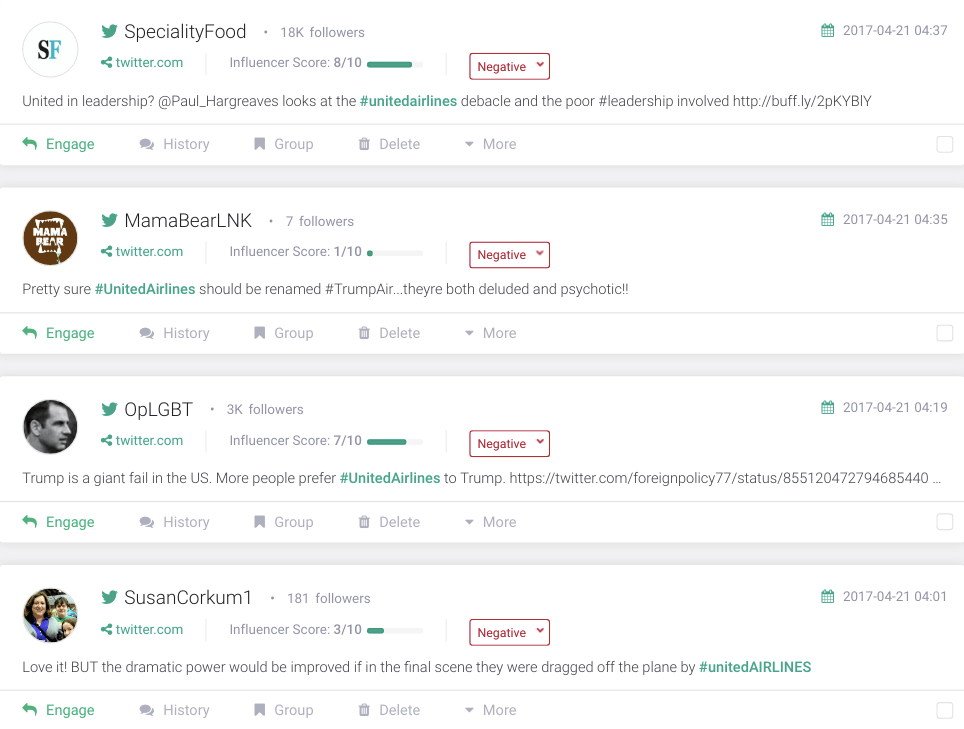
Sent to a Slack channel:

Land directly in your inbox:
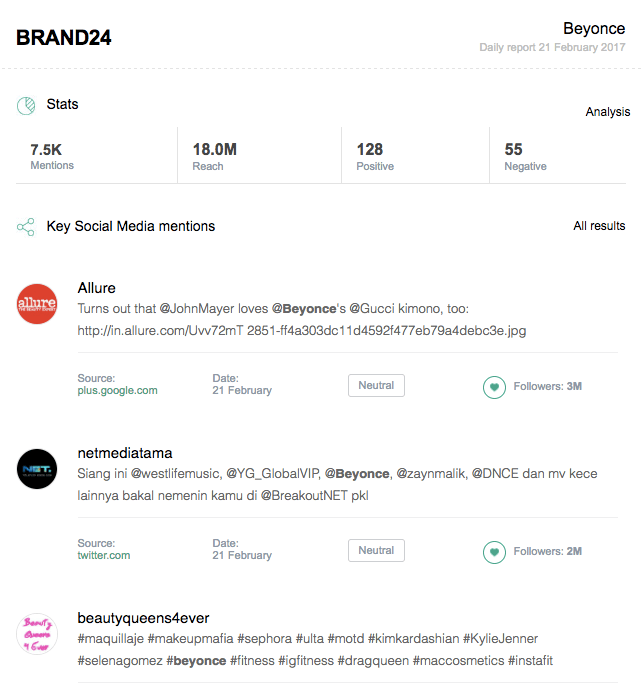
Arrive via the mobile app:
Sentiment Filter
All collected mentions can be analyzed when it comes to sentiment: positive, negative, neutral.
Having a real-time access to negative mentions is particularly important.
Unhappy customers tend to post their negative feedback online which can have negative consequences for your brand image. Receiving such mentions in real times allows your immediate reaction and straightening things out.

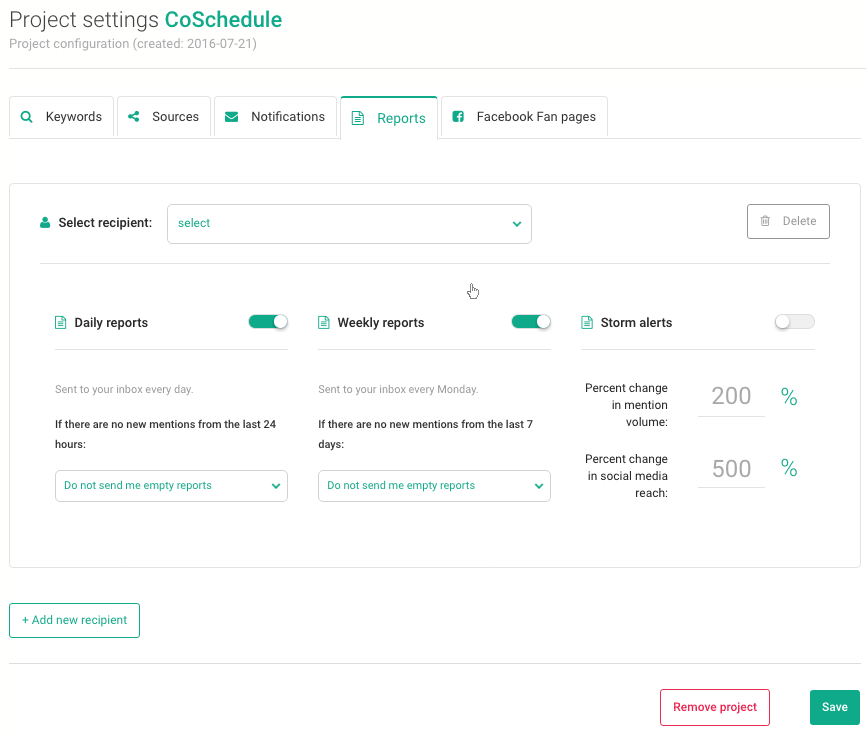
If negative feedback sparks a bigger debate online, you start receiving Storm Alerts. They notify you about all sudden changes in mentions volume.What’s important here is that you can turn negative feedback into a benefit. If a customer expressed disappointment, it means you have a room for improvement. In fact, you know exactly what to improve.
The Case Study of UBER
Some time ago, UBER released a new version of their mobile app. They used Brand24 to collect feedback after the launch.
With the release, the number of mentions increased by 100%.
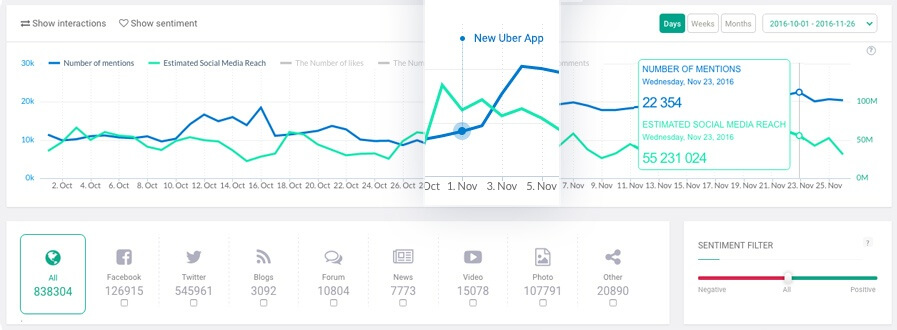
UBER also observed a significant increase in engagement.
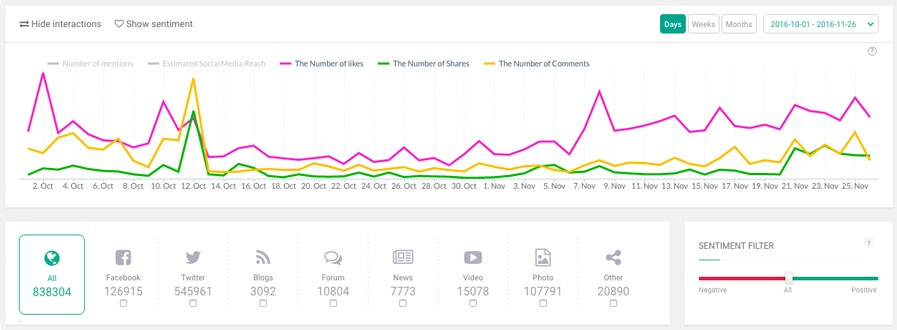
If you want to learn more about how UBER uses Brand24 to get customer feedback, check this case study.
Conclusion
Social media monitoring is the best way to acquire unbiased feedback without bothering your customers.
If you’d like to get to know what your customers are talking about you, here you can sign up for a Brand24 trial. It’s absolutely free (no credit card required).
It so happens that social listening works well also in other areas of business. Here are 17 ways social listening can help your business. Here are some other reads about social media monitoring:
Relevant reads:




![What is Brand Awareness? Guide & 9 Powerful Tactics to Build It [2022]](https://brand24.com/blog/wp-content/uploads/2020/12/15-The-ultimate-guide-to-brand-awareness-1400x660x2-640x300.png)

